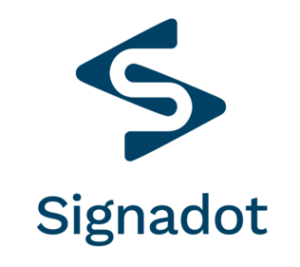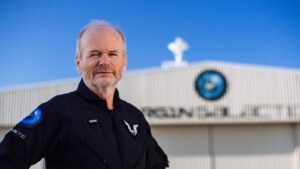![]() Q&A with DataStax VP of Marketing Michael Weir. The Burlingame, Calif.–based company was founded in 2010.
Q&A with DataStax VP of Marketing Michael Weir. The Burlingame, Calif.–based company was founded in 2010.
SUB: Please explain what DataStax is, and the value proposition you offer to the enterprise.
Weir: DataStax is the developer of DataStax Enterprise, a distributed, scalable, and highly available database platform built on Apache Cassandra that delivers optimal performance either on premise or in the cloud for modern enterprise applications that manage both real-time and analytic workloads.
SUB: How does the technology behind DataStax work?
Weir: With DataStax Enterprise, you get everything you need in one subscription to build modern applications that have no limits. Enterprise-class database software, visual management and monitoring solutions, and expert production support.
DataStax Enterprise is unique in that it can serve as the primary database receiving direct input from online applications, while offering analytic, Hadoop MapReduce functionality for analysis on that same data. All of this is accomplished across a smart and scalable architecture, powered by Cassandra, that delivers workload isolation for real time and analytic data operations.
Apache Cassandra is a highly scalable and high-performance distributed database that can serve as both an operational data store—the “system of record”—for online and transactional applications, and as a read-intensive database for business intelligence systems. Cassandra is able to manage the distribution of data across multiple data centers and offers incremental scalability with no single points of failure.
Cassandra is a logical choice for enterprises that need high degrees of uptime, reliability and very fast performance. Leading companies like Netflix, Twitter, Cisco, HP, Motorola, Rackspace, Ooyala, Openwave and many more rely upon Cassandra to manage the data needs of their critical production application.
SUB: Who do you consider to be your competition?
Weir: We obviously compete with some of the other “NoSQL” offerings, but we really consider ourselves to be in the same market as any enterprise database offering. We aim to be the database of record for a certain class of modern applications that require real-time transactional capabilities and the ability to scale easily to N machines and to the cloud, elastically and with high availability.
SUB: What do you offer that differentiates DataStax from your competitors or from companies with similar offerings?
Weir: DataStax offers both free Community and Enterprise editions of our platform, both powered by Cassandra. This enables customers to easily get up and running with the product and actually get into production easily. Both versions offer Smart Start Installers from DataStax to automatically install and configure Cassandra, which guarantees the best possible out-of-the-box performance experience in addition to demo apps, client libraries and a bundled operations and management console called OpsCenter to make it easy to run your clusters.
Additionally, DataStax Enterprise is unique in that it can serve as the primary database receiving direct input from online applications, while offering analytic, Hadoop MapReduce functionality for analysis on that same data. All of this is accomplished across a smart and scalable architecture, powered by Cassandra, that delivers workload isolation for real time and analytic data operations.
DataStax Enterprise solves the pressing problems encountered by today’s modern businesses that are looking for alternatives to legacy RDBMS systems that are not designed to support their growing data management needs.
SUB: What was the inspiration behind DataStax?
Weir: DataStax was envisioned by Jonathan Ellis, now the project chair for Apache Cassandra, while he was working on distributed data systems for Rackspace. He was having such a great time working with the technology that seeing its promise, he decided to leave to start his own company to commercialize the project. Matt Pfeil, also a Rackspace employee, drove to San Antonio from Austin to talk him out of it. That trip did not turn out as he expected and they both ended up starting Riptano, now DataStax, together with a seed investment from Rackspace.
SUB: When was the company founded, and what were the first steps you took in establishing it?
Weir: The company was officially founded April of 2010 in Austin, TX and the first thing we did was hire the best engineers we could find, including most of the heaviest committers to the open source Cassandra project. Even today, DataStax employees account for about 95 percent of the code committed to the project. After that we began to work on building the community and developer resources, including the only Cassandra documentation ever written (it’s hosted at: http://www.datastax.com/dev).
SUB: What have the most significant obstacles been so far to building DataStax?
Weir: There have not really been any obstacles other than just applying plain old fashioned elbow grease. It is a little hard to find engineers that are up to our exacting standards, but we value skills over location and now have a pretty amazing, distributed engineering staff. They are located from the Bay Area to Austin, New York City, Tokyo, France, and Belarus.
SUB: You recently raised $11 million in Series B funding—how do you plan to use the funds?
Weir: Pretty simple. Make the product better and make sure more people know about it and want it.
SUB: Why was this a particularly good time to raise new funding?
Weir: We found it to be a good time. For all of the hyperbole associated with the ‘big data’ space, there are some cool companies out there solving real enterprise problems and we are one of them. The investment dollars are going where they are needed.
SUB: Do you plan to raise more outside funding in the near future?
Weir: We are too busy executing right now and taking care of over 100 customers to think about another round of funding.
SUB: What big goals do you have for DataStax over the next year or so?
Weir: Really help the world understand the advantages of deploying these types of databases for their complex, growing modern applications and continuing to build the best product on top of the best, massively scalable, distributed database—Apache Cassandra.
DataStax – www.datastax.com










